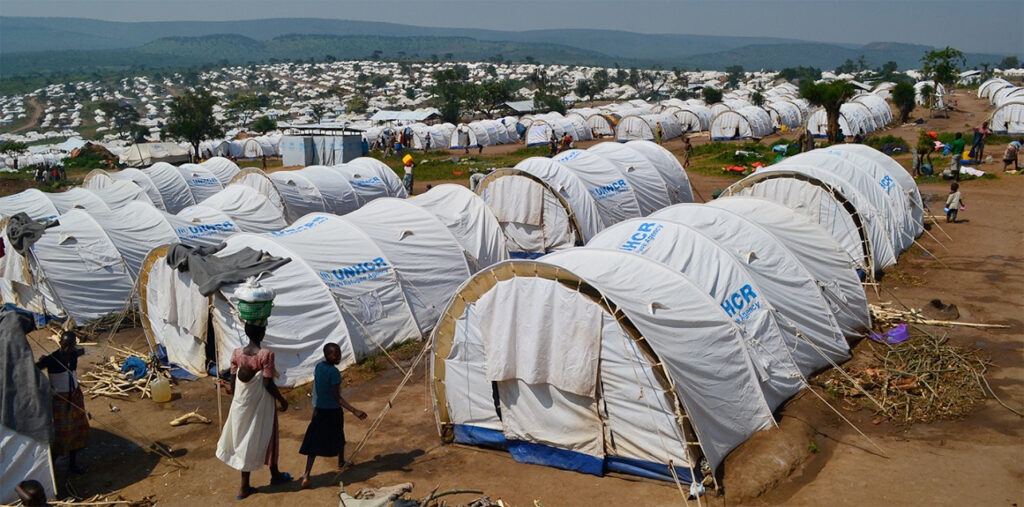On 15 November 2023, the UK supreme court deemed the UK Government’s plan to send asylum seekers to Rwanda as ‘unlawful’. The UN Refugee Agency (UNHCR) has also taken a stand against this plan. With a general election creeping up, it is unlikely that any asylum seekers will be on a plane to Rwanda, despite the estimated cost of the plan to reach over £240 million this year. There have been many conversations about the scheme that have spoken at high level about ‘policy’ and ‘law’ surrounding the issue, but little is told of the situation in Rwanda for refugees who are already there. A lack of information has been given about what day-to-day life is like as an asylum seeker or refugee in Rwanda.
Two of Rwanda’s bordering countries, Democratic Republic of Congo (DRC) and Burundi, have been experiencing armed conflict, resulting in an influx of refugees to Rwanda over the past decade, of which 62.5% are from the DRC and 36.9% from Burundi. Increased instability in the DRC means that this number is expected to grow. The UNHCR had 135,733 refugees, asylum seekers and displaced persons register with them in Rwanda as of September 2023. The UK had 175,142 refugees registered with the UNHCR in June 2023. While the UK does have more people registered, it must be taken into consideration that the UK has a GDP per capita that is 52.5x bigger than Rwanda, where 40% of people live below the poverty line. The UK is in a much better position to support refugees, which begs the question: what is it like for refugees that are registered in Rwanda?
Rwanda has carefully composed its image of being the ‘land of refuge’. Journalists are usually forbidden from entering inside camps. One journalist allowed in the Gashora Transit Centre described a haven for the 1000 refugees living there.They described facilities for mental health support, a driving school, basketball courts and a language center. This image of Rwanda does however contradict the majority of reports of refugees from Rwanda, including what I was personally told.
Rwanda has carefully composed its image of being the ‘land of refuge.’
In December I traveled to Rwanda to attend a week-long innovation lab in Kigali. I can say that my first impressions of the city lived up to its reputation of being clean and green. The country has developed at a fast rate since the 1994 genocide, in which one million people were killed in just 100 days. I was privileged to work alongside young people who had been refugees in Rwanda, and have the opportunity to hear their stories.
One of the key links I found between people’s stories was the difficulty for people to rebuild their lives in Rwanda due to economic instability and a lack of opportunity to do so. Rwanda has been seen as a leader in the region for economic inclusion due to policies that allow refugees to take on wage-earning jobs. However, many refugees and asylum seekers in Rwanda struggle to make enough money to support themselves, feed their families or receive an education. Refugees who do not live in camps are not entitled to any financial assistance and face barriers to accessing formal employment. Many people rely on working several insecure and low-paying jobs within the week to make enough money to support their families. Those living in camps may receive housing and some monetary support, but also face more challenges.

91% of refugees in Rwanda live in one of five camps around the country, the largest of which hosts almost 60,000 people. The camps in Rwanda have faced cuts to many of the much needed resources. Just 38% of the funds for the UNHCR Rwanda Appeal were granted this year. There are no reports of money given to Rwanda from the £240 million UK policy going towards supporting current refugees in Rwanda.
I reached out to several current and prior refugees in Rwanda to learn from them directly, however I was met with a similar response of “I would like to share, but it is too risky”. In the Supreme Court’s decision in November, attention had also been drawn to Rwanda’s history of human rights abuses. The apprehensiveness of refugees and asylum speakers to speak openly about the treatment they received since coming to Rwanda further raises questions about how safe Rwanda really can be for refugees.
Preventing refugees from speaking about their experiences is commonly reported, and freedom of expression suppressed. In 2018, the Human Rights Watch reported that eight people were killed and 20 injured when 3000 refugees protesting UN food cuts were met with police violence. There have also been reports of violence within the camps. Accounts of assault and sexual violence from officials have also surfaced in the past few years.
It is not just refugees who experience violence in Rwanda. Rwanda also produces refugees each year. In 2021 alone, the UNHCR reported 12,838 Rwandan nationals had fled the country to seek asylum elsewhere. There have been several reports of persecution against Rwanda’s political opposition. Nationals who speak out against the government do not feel safe, let alone refugees who are arguably in a far more precarious situation.
The UK Supreme Court deemed Rwanda an unsafe country for people seeking asylum. However, Prime Minister Sunak is determined to push through policy to (somehow) deem Rwanda a safe place. But with limited free speech and covered up human rights abuses, how safe could Rwanda really be for refugees?
